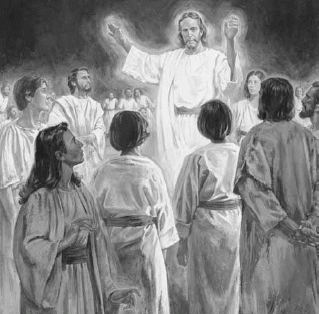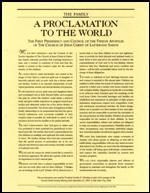Question
Gramps,
Why don’t we live as long as the biblical people?
Carla
Answer
Carla,
The Old Testament presents numerous instances where individuals lived for several centuries. Genesis 5, for example, lists the ages of Adam’s descendants, many surpassing 900 years. Methuselah stands out as the longest-lived figure, reaching 969 years before his death. These extended ages are not isolated; they appear consistently throughout early biblical narratives, suggesting a deliberate theological or symbolic purpose rather than mere historical record-keeping.
One prevailing interpretation is that these long lifespans symbolize a closer connection to the divine and a purer, uncorrupted state of humanity before events like the Great Flood. The extended years could represent wisdom, strength, and the favor of God bestowed upon these patriarchs. Additionally, the gradual decline in lifespans post-flood might symbolize the dispersal of human longevity due to increased sinfulness or societal complexity.
Scholars also argue that these ages might carry symbolic meanings rather than being literal historical accounts. In many ancient cultures, numbers held significant symbolic value. For instance, the number seven often represents completeness or perfection. Therefore, the Grand Ages could be literary devices to convey the greatness and foundational roles of these individuals within their communities.
The question of whether these ages are to be taken literally has been a subject of debate among theologians and historians. Various frameworks help in understanding these narratives:
Adherents to a literal interpretation believe that individuals genuinely lived for such extended periods. They argue that environmental conditions before the Flood were markedly different, possibly allowing for longer lifespans. Factors like reduced exposure to environmental stressors, the absence of widespread diseases, and different atmospheric compositions might have contributed to enhanced longevity.
Conversely, many scholars view these ages as symbolic. They suggest that the extended lifespans emphasize the significance of these figures in biblical history. The numbers could also reflect a different method of counting years or exaggeration for storytelling purposes.
When comparing biblical accounts with other ancient Near Eastern texts, similar extended lifespans are observed. For example, the Sumerian King List records kings reigning for thousands of years. This parallel suggests a common literary motif across cultures rather than a unique historical fact, supporting the symbolic interpretation of these ages.
Understanding ancient lifespans also involves examining the cultural and environmental contexts of the time. While modern science acknowledges significant advancements that have extended human lifespans today, it’s essential to consider how ancient lifestyles might have influenced longevity differently.
Early humans often had diets rich in natural, unprocessed foods and led physically active lives. Some argue that such lifestyles could contribute to overall health and longevity. However, it’s also likely that limited medical knowledge and the prevalence of harsh conditions would counteract these benefits.
Genetic makeup plays a crucial role in determining lifespan. While no evidence suggests that biblical patriarchs possessed unique genetics allowing for extended lifespans, selective genealogies in the scriptures may highlight individuals with exceptionally long lives for narrative emphasis.
Before the widespread impact of industrialization, environmental factors such as pollution were minimal. Cleaner air and water, along with fewer environmental toxins, might have contributed to better overall health and longer lifespans. However, ancient societies also faced challenges like limited medical care and higher mortality rates from diseases, making extended lifespans less likely from a purely environmental standpoint.
Research indicates that the human lifespan is influenced by genetic factors, with a current maximum lived age recorded at 122 years (Jeanne Calment). Theoretically, the natural degradation of cells and the accumulation of genetic mutations set a biological limit to human longevity. Theoretically, surpassing this limit would require significant breakthroughs in genetic engineering and medicine, which are yet to be realized.
Telomeres, protective caps at the ends of chromosomes, play a vital role in cellular aging. Each time a cell divides, telomeres shorten, eventually leading to cellular senescence or death. Maintaining telomere length is crucial for longevity, and while some studies suggest lifestyle factors can influence telomere dynamics, the extreme lifespans described in the Old Testament far exceed what’s biologically plausible.
Contrary to ancient times, modern medicine has significantly extended the average lifespan through advancements in disease prevention, surgical techniques, and chronic disease management. However, these improvements still fall short of reaching the multi-hundred-year lifespans reported in biblical texts. This discrepancy highlights the importance of understanding the contextual differences when comparing ancient and modern lifespans.
Gramps







